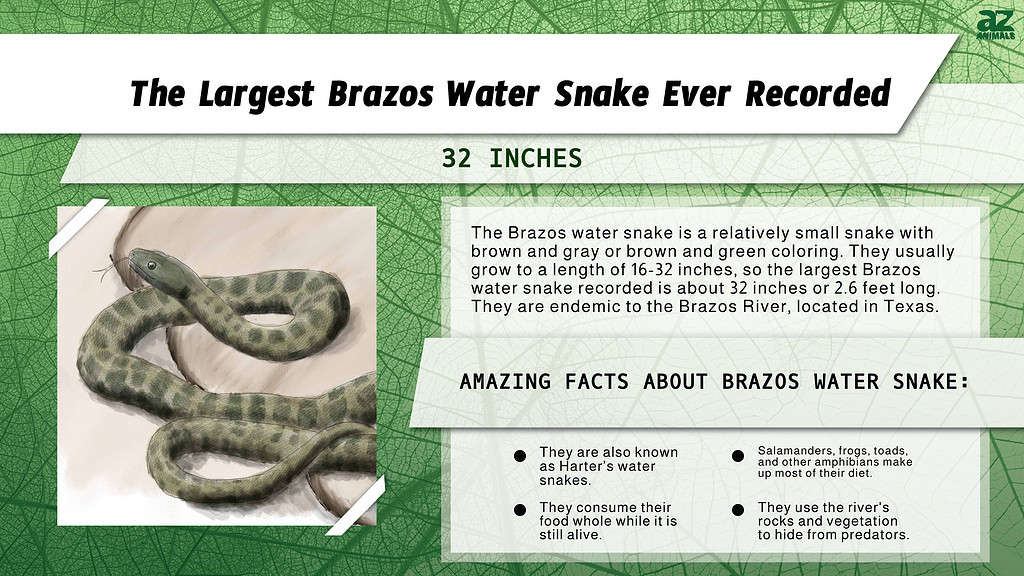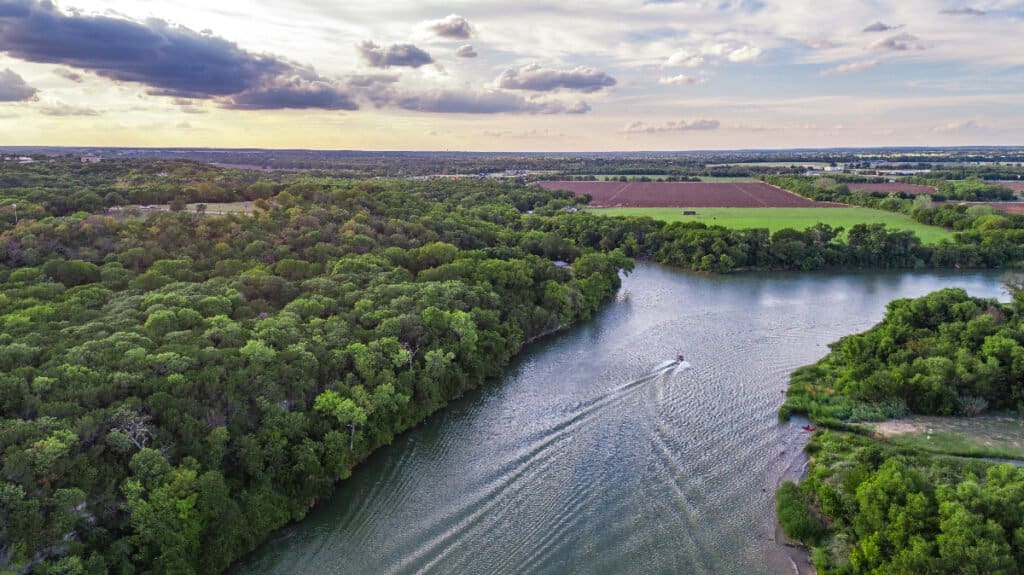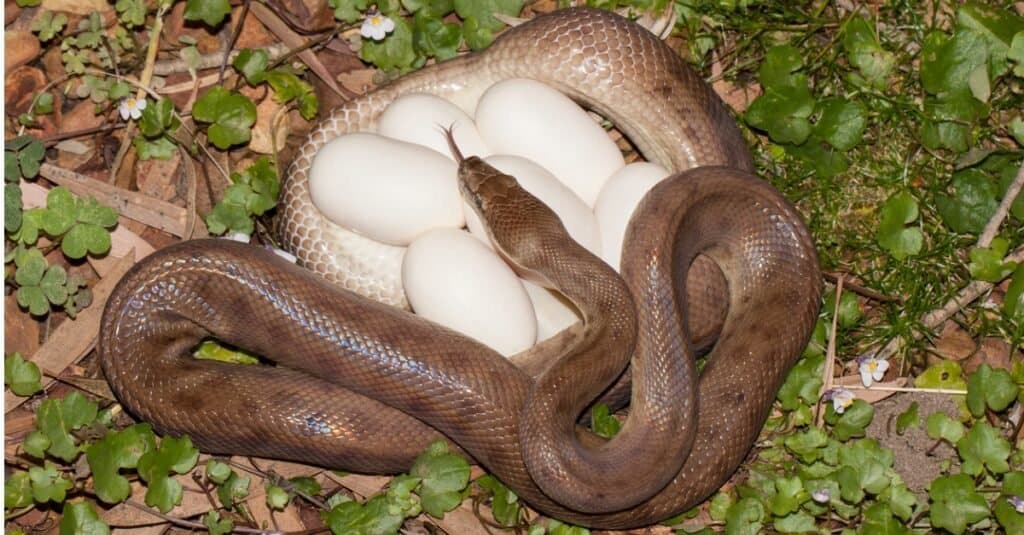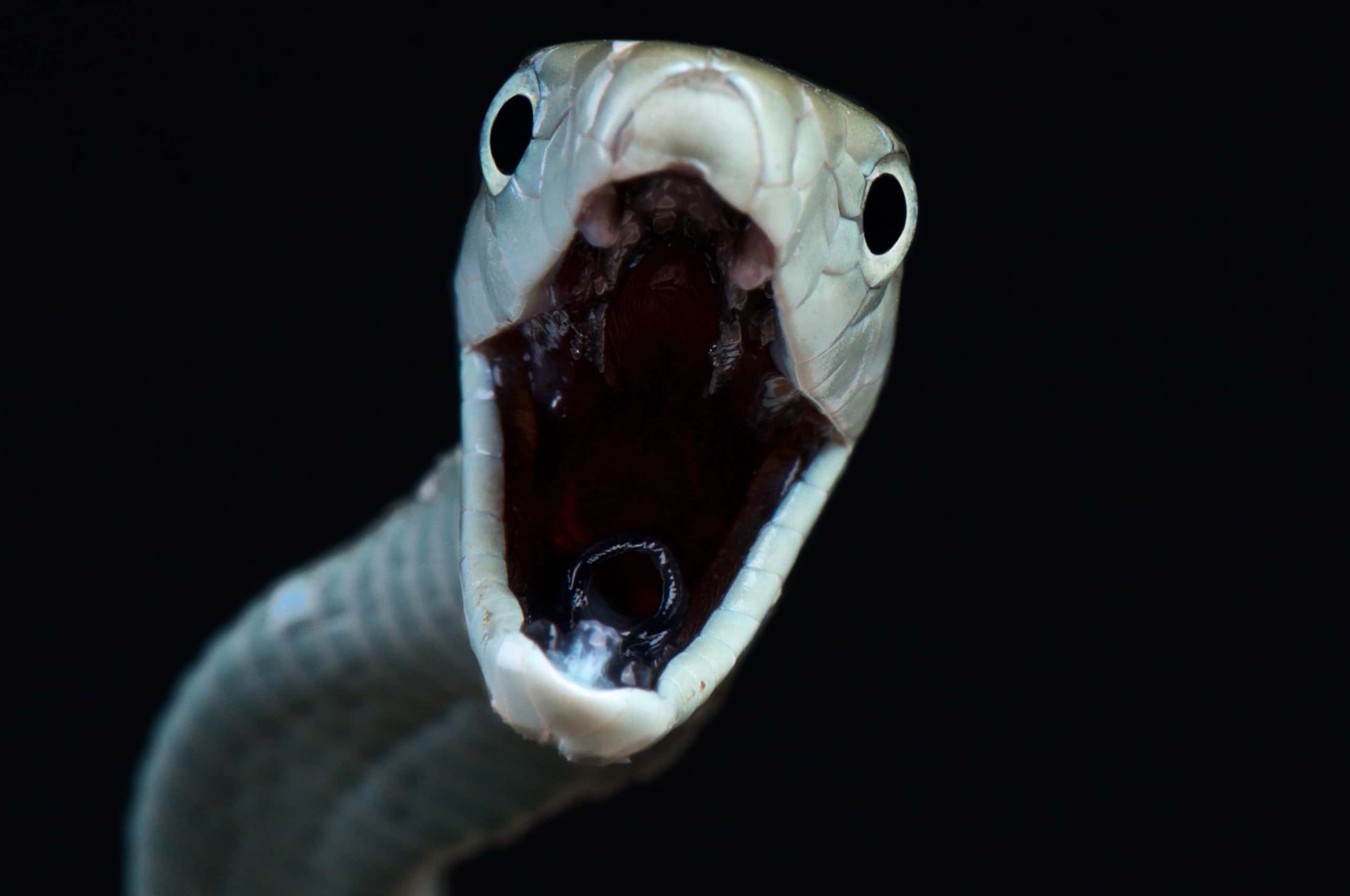Key Points:
- The Brazos River’s rocky shoreline and swiftly moving waters make the perfect habitat for Brazos water snakes.
- Brazos water snakes are relatively small, usually between 1 and 3 feet in length.
- They typically have pink or orange bellies and cream or slightly yellowish necks.
The Brazos River and its surroundings are not unfamiliar to animals, especially reptiles. For reptiles, the Brazos River is an ideal environment. The area’s moderate climate is perfect for a variety of snake species, including venomous ones like rattlesnakes, cottonmouths, and diamondbacks, as well as non-venomous ones like rat snakes, ribbon snakes, mud snakes, and water snakes.
Water snakes are relatively common in areas with bodies of water, as their name implies. Brazos water snakes are relatively small and non-venomous snakes in Texas, along the Brazos River, belonging to the family Colubridae and genus Nerodia. How big do they get? What is the largest Brazos water snake ever recorded? This article will answer all your questions, even ones you were unaware you had.

Where Is the Brazos River?
The Brazos River is located in Freeport in Texas, and is occasionally referred to as Rio De Los Brazos De Dios, which translates to The River of the Arms of God. Beginning in north-central Texas, the Brazos River runs to the Gulf of Mexico. With 1,280 miles and 45,000 square miles, the Brazos River is the 11th longest river in the United States and the longest in Texas. Due to its vastness, the river frequently acts as a border between East and West Texas.

The Brazos River’s name is Spanish for “the arms of God.”
©davisdeatonphotography/Shutterstock.com
How to Identify Brazos Water Snakes
The Brazos water snake, also called Harter’s water snake, is a relatively small snake with brown and gray or brown and green coloring. The four rows of dark dorsal patches that run the length of this species’ body and give it a checkerboard-like appearance serve as one of its distinctive identifiers. Brazos water snakes also typically have pink or orange bellies and cream or slightly yellowish necks.
The Brazos River’s rocky shoreline and swiftly moving waters make the perfect habitat for Brazos water snakes. There are several rocks near the shore where the Brazos water snake is known to hide, and they also use the rocks as a feeding ground.

What Is the Largest Brazos Water Snake Ever Recorded?
As established, Brazos water snakes are relatively small. They usually grow to a length of 16-32 inches (41-81 cm), and this includes their tails. The largest Brazos water snakes reach about 32 inches (81 cm) in length.
What Do Brazos Water Snakes Eat?
The Brazos water snake is a carnivorous daytime hunter that prefers to forage alone. Salamanders, frogs, toads, and other amphibians living in or near water make up most of their diet. In addition, they pursue crayfish and other tiny fish. They occasionally consume newborn reptiles, small rats, and even insects. Brazos water snakes eat their food whole while it is still alive as they are non-venomous, do not have deadly fangs, and are not constrictors.
Brazos water snakes enjoy using the surrounding rocks or vegetation to hide from predators, and this helps explain why they hunt throughout the day. Despite their small size and generally benign nature, their saliva contains venom-like proteins (anticoagulants), which cause blood loss.
What Eats Brazos Water Snakes?
While stalking prey throughout their river environment, Brazos water snakes have their own predators to watch out for. Their primary predators include owls, hawks, raccoons, skunks, foxes, and other birds. Badgers, mountain lions, bobcats, and weasels are also major threats. In more populated areas near the river, a Brazos water snake should also be wary of domestic or feral cats. These feline hunters are well-equipped to snatch up the endangered reptiles.
Are Brazos Water Snakes Aggressive?
Despite snakes’ general reputation, Brazos water snakes are not aggressive. They might seem intimidating at first, just like every other snake, but they have more of a friendly nature. Even though their bites are not venomous, they bite as a defense mechanism when they feel threatened, just like other reptiles. They will also dive back into the water if they feel threatened.
Additionally, Brazos water snakes make wonderful pets, just like the majority of other water snakes, because they are non-venomous and have a pleasant attitude. But since they are considered near-threatened and somewhat endangered, it is best to let them live in the wild where they belong, rather than keeping them as pets.

Snakes are ovoviviparous, which means they lay eggs that hatch inside the mother.
©iStock.com/Ken Griffiths
How Often Do Brazos Water Snakes Give Birth?
Brazos water snakes can birth as many as 23 babies between September and October. It is worth noting that Brazos water snakes are ovoviviparous animals. Ovoviviparous animals lay eggs that grow inside their mothers’ bodies, and inside the mother is where the eggs hatch. After hatching, the egg spends some time inside its mother. Here, it is cared for internally rather than through a placental attachment. Essentially, ovoviviparous animals give birth to live young.
Generally, reptiles live longer than mammals of the same size. The cells of reptiles seem to not show the same aging damage as other animals. Adult Brazos water snakes can live up to five years of age, and a few of them live a little longer than that, although those that do are not many.
Are Brazos Water Snakes Endangered?
The International Union for Conservation of Nature (IUCN) has classified the Brazos water snake species as Near Threatened. These animals now exist in a much smaller range than they did in the past. The population of Brazos water snakes has decreased due to this substantial loss in their numbers. Because of this condition, it is possible that shortly, their species will become extinct or become threatened if population numbers do not rise.
The Texas Parks and Wildlife Department has designated the Brazos Water Snake as threatened and is therefore protected under the Texas Parks and Wildlife Code. The Brazos water snake is exclusively found along the upper reaches of the Brazos River drainage, along a limited portion of stream corridor and reservoir shoreline, giving it one of the most constrained ranges of any Texas snake.
One of the reasons for this decline in their population is the past construction of dams in the area. Adult Brazos water snakes use a considerably wider area of habitats than the younger ones, such as deeper waters and more rocky terrains. So, it was easier for adult Brazos water snakes to lose some habitat due to upcoming dams and development initiatives.
Other Record-Breaking Snakes
The black mamba is a large snake that is not only an aggressive snake but is one of the most venomous in the world. With a deadly poison that if left untreated can kill within one to six hours, medical attention must be sought immediately after contact. Untreated bites have a mortality rate of 100%. You will experience pain and paralysis, and then death. These snakes generally only bite if provoked and when they feel threatened.
This serpent is also the fastest snake in the world, in terms of strike and speed, and can outrun a human with its incredibly fast speeds of 12.5 miles per hour although this extremely shy snake would prefer to avoid human contact. Native to Sub-Saharan Africa, these snakes generally reach lengths of 6.6 to 8 feet but the largest one ever recorded was 14 feet, 9 inches, found in Zimbabwe.

The largest black mamba ever recorded was 14 feet 9 inches long.
©reptiles4all/Shutterstock.com
The photo featured at the top of this post is © iStock.com/Zdenek Macat
Discover the "Monster" Snake 5X Bigger than an Anaconda
Every day A-Z Animals sends out some of the most incredible facts in the world from our free newsletter. Want to discover the 10 most beautiful snakes in the world, a "snake island" where you're never more than 3 feet from danger, or a "monster" snake 5X larger than an anaconda? Then sign up right now and you'll start receiving our daily newsletter absolutely free.
Thank you for reading! Have some feedback for us? Contact the AZ Animals editorial team.






